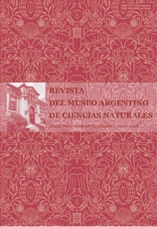Do native grazers from Patagonia, Argentina, consume the invasive kelp Undaria pinnatifida?
Resumen
The invasive kelp Undaria pinnatifida (Phaeophyceae, Laminariales) was first reported in Golfo
Nuevo in 1992 and since then it has spread widely over more than 170 km, all along the northern Patagonian
coast, Argentina. Field observations in the region have indicated the potential role of invertebrate grazers, like
the sea urchins Arbacia dufresnii and Pseudechinus magellanicus and the gastropod Tegula patagonica, in
controlling algal density. Laboratory experiments were conducted to ascertain whether, and if so, to what extent
these grazers actually feed on the algae. The studied sea urchins fed on the alga, whereas the snail scraped off
biofouling adhered to its surface. Higher densities of grazers were observed on the kelp during summer and
might be attributed to increasing in metabolism with increasing temperature, and degradation of blades and
sporophylls, which possibly increase their palatability.
Nuevo in 1992 and since then it has spread widely over more than 170 km, all along the northern Patagonian
coast, Argentina. Field observations in the region have indicated the potential role of invertebrate grazers, like
the sea urchins Arbacia dufresnii and Pseudechinus magellanicus and the gastropod Tegula patagonica, in
controlling algal density. Laboratory experiments were conducted to ascertain whether, and if so, to what extent
these grazers actually feed on the algae. The studied sea urchins fed on the alga, whereas the snail scraped off
biofouling adhered to its surface. Higher densities of grazers were observed on the kelp during summer and
might be attributed to increasing in metabolism with increasing temperature, and degradation of blades and
sporophylls, which possibly increase their palatability.
Texto completo:
PDFEnlaces refback
- No hay ningún enlace refback.

This work is licensed under a Creative Commons Attribution 3.0 License.

